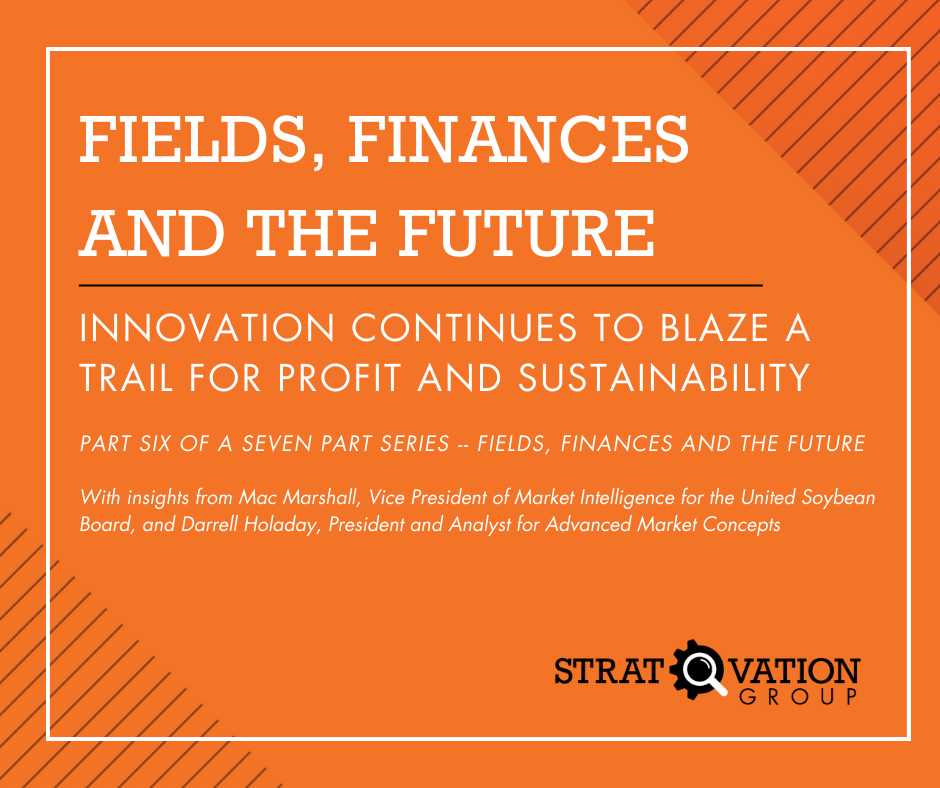Innovation Continues to Blaze a Trail for Profit and Sustainability
Part six of a seven part series — Fields, Finances and the Future
From precision agriculture and artificial intelligence to robotics and advances in the use of agricultural biological inputs, a growing list of innovations are gaining economic advantage at the farm level. But in order to boost profitability and greater sustainability through higher levels of efficiency, marketers of those innovations must prove the value of their products to farmers.
History proves that when farmers see that a product or practice benefits their bottom lines, they will embrace it. According to USDA, the level of U.S. agricultural productivity grow 2.7 times between 1948 and 2019. With innovations coming on line since then, the concept of “growing more with less” is still only scratching the surface.
The growing list of innovations in machinery, irrigation techniques, crop breeding, data analytics, and enhanced crop inputs, including agricultural biologicals, have enabled farmers to increase yields, reduce costs, and manage operations more efficiently. And typically, what has been good for their bottom lines has also been good for the environment.
“We’ve seen advancements in seed technology and crop management practices, which have contributed to increased yields and better overall efficiency,” explained Mac Marshall, Vice President of Market Intelligence for the United Soybean Board. “That is directly related to another crucial topic…sustainability. Sustainable agriculture practices have become increasingly important in recent years. The industry is striving to minimize its carbon footprint, reduce water usage, preserve soil health, and protect biodiversity.”
Darrell Holaday, President and Analyst for Advanced Market Concepts, adds other factors such as blockchain technology and autonomous tractors, which he says make far more sense in an open farm field than self-driving cars do on America’s crowded highways.
“The adoption of these technologies can improve efficiency, reduce costs, and enhance sustainability in agricultural practices,” he said. “Blockchain technology offers opportunities for enhanced traceability and transparency in the supply chain and that allows farmers to prove their sustainability accomplishments.”
While continued innovations in gene editing and crop input chemistry will provide better crop nutrition and protection going forward, both economists agree there is a growing spot for more natural solutions like agricultural biologicals — biopesticides, biostimulants, and biofertilizers.
“I believe that American agriculture can remain competitive by focusing on reducing input costs through the use of biologics, which are solidly on the rise,” Holaday said. “In a lot of cases biologics make economic sense for farmers as they offer the opportunity to reduce input costs while maintaining productivity.”
He said the use of biologicals aligns with the overall objective of input management and risk reduction for producers. He notes that farmers have been exploring various biological solutions, in conjunction with precision agriculture and the use of cover crops, to enhance their operations.
“While these practices may not work universally across all regions and farm types, they offer viable options for improving productivity and sustainability in specific contexts,” he said. “Biologics have the potential to enhance nutrient utilization and reduce dependency on traditional synthetic inputs. If these solutions prove cost-effective and do not compromise consumer preferences, they are more likely to be embraced.”
Marshall said the use of proven biologicals augments the use of traditional chemical inputs.
The biggest hurdle to greater use of biologicals is to overcome the “snake-oil” narrative held by some. Biologicals companies must prove to farmers the documented agronomic and return-on-investment advantages of using their products to farmers.
“Companies that want to succeed are going to have to figure out a way to prove the efficacy and cost-effectiveness,” Marshall said. “Biologicals could be really important for building a more resilient ecosystem for farming.”
Each time a novel approach is able to demonstrate efficacy in the marketplace, the adoption curve picks up. In turn, that sends signals to other innovators and shines a light on other solutions to root out inefficiencies in crop production. Innovations in the agricultural sector are drawing of lot of interested investors, according to Marshall.
“Startups are drawing a lot of interest,” he said. “I think that’s a proxy for the appreciation and understanding of what continued technological innovation can bring to farming. We have 8 billion people on the planet and that means our caloric needs and protein consumption demand is scaling up significantly as well.”
It’s up to U.S. agricultural innovations to help meet that challenge head-on.
The agricultural economy can be a bumpy road, but through innovation, optimism and a spirit of resilience, America’s farmers are poised for the challenges and opportunities that lie ahead. Stratovation Group can help your company or organization strengthen your connection with farmers through research-informed strategies and consulting services. If interested in hearing more connect with Cam Camfield at [email protected].
Next Up Part Seven: Bullish Outlook for U.S. Ag Backed by Numerous Factors

